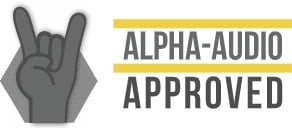

For whom? And Conclusion
Contents
Good question. Of course for the audio engineer who works with vocals, classical, acoustic and jazz. And of course for all types of music, but we do think it excels in the genres mentioned above. These monitors are an indispensable tool; if the mix sounds good on the SCM20A, then it will sound good everywhere. It seems to be a slightly more forgiving alternative to the no longer available Yamaha NS10. In the studio, an A/B comparison with a full-range and midfield monitor is necessary.
For those looking for the ultimate desktop speaker, this ATC is definitely an option. Place them about 1 metre apart, connect a good DAC with volume control and you won’t want to leave your desk.
For the living room, the SCM20A has a surprisingly wide range for a nearfield monitor. The sound image remains intact at a distance of a few metres, although we do miss the bass. These monitors can function perfectly in a not too large room. An additional subwoofer would be the solution if you want more bass. If you are brand loyal and stick with ATC, these will come at a hefty price tag. However, subwoofers are also available from other good studio brands (such as Genelec and Dynaudio).






ATC SCM 20A Pro. You wrote under Cons:
“Everything is audible
Poorly mixed tracks are mercilessly exposed”
Aren’t those the point for a Pro studio speaker?
Yes, you are right that this is the point to pro monitor speakers.
Nevertheless, you would be surprised how many of these speakers perform differently compared to the ACM20A.
We have reviewed quite some professional monitors, please read these and this review. The list of pros and cons does not cover the full story.
Happy reading!